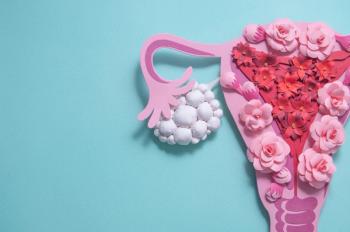
The Perfect Pee
Interviews from the AUGS/SGS Joint Scientific Meeting held July 29-31, 2004 in San Diego, CA
Roberta Speyer: Welcome, this is Roberta Speyer, president of OBGYN.net. I’m here at the American Urogynecology Society Meeting in San Diego, 2004. I have the pleasure of talking to Professor Ajay Rane. Professor Rane is here with us from James Cook University in Townsville, Australia, good morning! He has what I think is going to be a very interesting topic, for both us women and for our daughters. He has information about how to have the perfect pee. What is the perfect pee Dr. Rane?
Prof. Ajay Rane, MD: Good morning! Well Roberta, this started in the late ‘80s when we did a trial in Britain. It was Professor Kate Moore from Sydney who initiated this trial. The trial basically showed that 84% of British women will not sit on the toilet, except the ones in their house, for fear of catching disease. We have shown scientifically that if you hover on top of the toilet, you only empty one third of your bladder. So you hold back a lot of urine. That is not very good for your bladder because if you have stagnant urine in there obviously it’s going to promote dysfunctional emptying of your bladder, and it’s going to promote you getting infections.
Roberta Speyer: Does this lead to some of the recurrence of urinary tract infections that women sometimes encounter?
Prof. Ajay Rane, MD: It could possibly lead to that. It can also lead to a habit where you traditionally stop emptying your bladder efficiently. Therefore you go to the toilet more often. There are people that go to the toilet 20, 25 times during the day because they do what’s called the splash and dash. They don’t take the time to sit on the toilet properly, or to adopt the proper posture to efficiently empty their bladder and bowel.
Roberta Speyer: What is a proper posture?
Prof. Ajay Rane, MD: We have done a lot of research to show that the most appropriate posture, given the construction of the western closet, is to actually sit on the toilet, with your feet flat on the ground, because flat feet promote relaxation of your thigh muscles and your pelvic muscles. You have your elbows on your knees and you lean forward as if you are reading a newspaper on the floor. This promotes efficient emptying of both your bowel and bladder.
If you think we were the only corny, sick people trying to do studies like that, there has been a group in Belgium that have looked at exactly the same issue and come to the same conclusions. The perfect pee is by adopting a posture where you sit on the toilet, with you feet flat on the ground, elbows on your knees and you lean forward. This is especially important in children because one in nine children develop bowel and bladder dysfunction purely due to inappropriate posture on the toilet. So children should be given either footstools or foot support on the toilet. Dangling feet on toilets is bad for their bladder and bowels. That is the message we want to give to all parents, to look after their children as far as their bladder and bowel is concerned.
Roberta Speyer: When we’re thinking about potty training we should look beyond the fact that we want to give the child, once they’re off the little potty and actually on the full size toilet, foot support and we want to show correct posture. Is this both for little boys as well as girls?
Prof. Ajay Rane, MD: It’s very true. We were always intrigued because the men would come to us and ask if this is good for men as well. There have just been recent studies that have shown in fact that this is very good for men as well. So men need to sit, they don’t need to stand. They need to sit to empty their bladder as well as their bowel.
Roberta Speyer: Well, that’s very interesting and we certainly appreciate you taking the time to share this with us.
So, we need to take toilet training for our children, and also consider ourselves when we’re out in a restaurant or somewhere and we think we’re better off hovering. We’re probably doing ourselves more damage than any germs we could possibly be saving ourselves from. So, posture - feet on the ground and then you’ll be saving your pelvic floor for your future.
Prof. Ajay Rane, MD: That’s very true.
Roberta Speyer: Thank you very much.
Prof. Ajay Rane, MD: My pleasure.
Newsletter
Get the latest clinical updates, case studies, and expert commentary in obstetric and gynecologic care. Sign up now to stay informed.
















